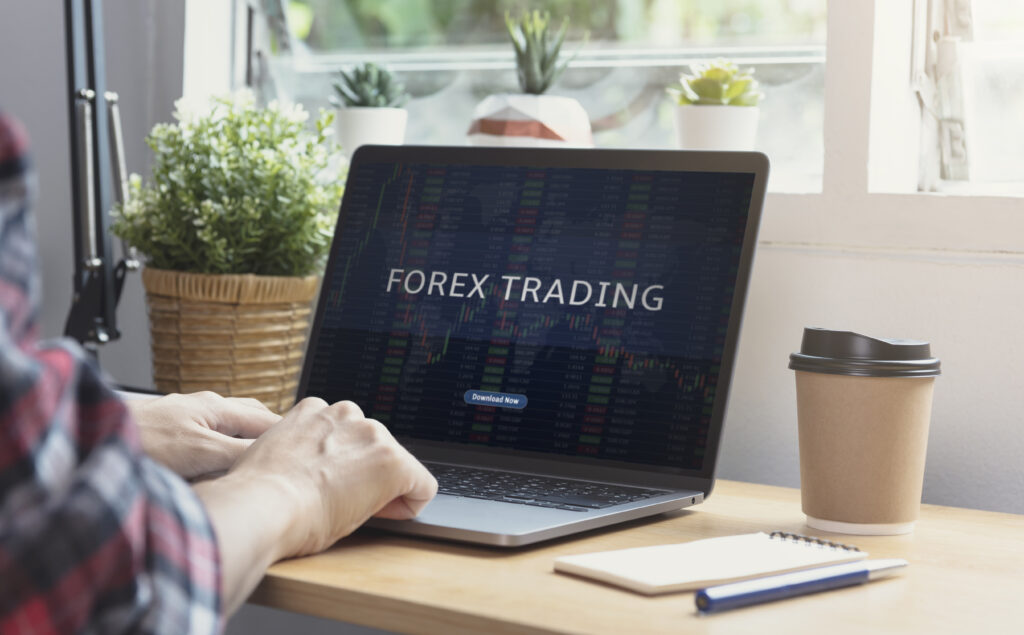Introduction
Revving forex markets on recovery optimism has become one of the defining trends in the post-pandemic era. The global pandemic, which began in early 2020, reshaped not only economies but also societies and financial systems across the globe. What started as a health crisis quickly turned into an economic shock that disrupted supply chains, crushed consumer demand, and created unprecedented uncertainty in global markets. Forex markets, already known for their volatility, became even more dynamic during this time, with traders facing sudden price swings, rapid central bank interventions, and policy shifts aimed at stabilising economies.
Yet, as the dust began to settle, the narrative started to shift. The world’s gradual recovery from the global pandemic sparked a new wave of resilience and confidence. Governments implemented stimulus packages, vaccination campaigns restored mobility, and businesses adapted to new digital and operational realities. This collective sense of rebuilding gave rise to strong recovery optimism, one that began fuelling momentum across currency markets. Traders witnessed currencies of resilient economies strengthen, safe-haven demand recalibrate, and risk appetite return in stages.
Today, that optimism continues to shape forex trading strategies. Investors no longer just analyse economic data in isolation; they look at how recovery narratives influence sentiment and capital flows. For traders, this creates both opportunities and challenges. Seizing the right moves in a recovery-driven environment requires an understanding of how optimism interacts with fundamentals, policy directions, and global trade dynamics.
This article explores how forex markets have responded since the global pandemic and highlights practical ways traders can position themselves to benefit from recovery-driven opportunities. The theme of resilience, adaptation, and optimism remains central to understanding where currency markets are heading next.
Global Pandemic: A Catalyst for Change
The term “global pandemic” became a defining phrase of the decade, symbolising disruption across every level of society. Lockdowns, travel bans, and economic shutdowns rattled global markets. Financial markets, especially forex, experienced a sharp uptick in volatility as traders scrambled to assess the rapidly changing situation.
Governments responded with emergency stimulus packages, quantitative easing, and historically low interest rates. Central banks cut rates to near zero, pumped liquidity into markets, and introduced aggressive bond-buying programmes. The currencies of countries with high infection rates fell sharply, while safe-haven currencies like the US dollar, Japanese yen, and Swiss franc surged due to investor demand for stability.
Global trade suffered immensely. Supply chains collapsed, demand for exports fell, and cross-border transactions declined. As a result, exchange rates fluctuated heavily. The “Global Pandemic” evolved from a health crisis into a full-fledged economic disruption that changed how currencies were valued.
The social and psychological effects of the pandemic also played a role. Consumer behaviour changed. Travel and tourism industries shut down. Technology firms thrived. All these industry shifts had implications for national currencies. For instance, economies heavily dependent on tourism saw their currencies weaken. Meanwhile, countries with booming tech exports gained strength.
Forex Resilience During the Global Pandemic
Despite the initial shock, the forex market displayed resilience. Unlike equities or real estate, forex is decentralised and operates 24/5. This structure allowed traders to respond to pandemic-related news in real time. Trading platforms saw a surge in activity, as many retail investors entered the forex space, looking to take advantage of volatility.
Traders adjusted quickly. Strategies shifted from trend-following to range trading and scalping. Risk management tools like stop-losses and trailing stops became more important than ever. Algorithms were updated to react to real-time pandemic data, including infection rates, hospitalisations, and vaccine announcements.
Currency pairs involving the US dollar, euro, British pound, and commodity-linked currencies like the Australian and Canadian dollars became more active. Central bank statements were scrutinised for clues about future monetary policy. The global pandemic redefined which data points were most critical.
Furthermore, the market embraced sentiment-based trading. Traders tracked global mood swings through social media trends, news cycles, and government briefings. The keyword “Global Pandemic” consistently influenced price action and trading volume.
Digital adoption also accelerated. Brokers upgraded their platforms to handle larger volumes. Mobile apps became essential for on-the-go trading. Traders participated in global forums and webinars to learn strategies for managing pandemic uncertainty. Forex education saw a surge, as more people sought to master the skill.
Global Pandemic Recovery Optimism
As countries rolled out vaccines and introduced reopening plans, a sense of optimism emerged. This optimism, though fragile, brought a noticeable shift in forex market behaviour. Currencies of countries that managed the pandemic effectively began to strengthen.
Emerging markets like Vietnam, Chile, and India (post-second wave) started to attract investor interest. Nations with strong healthcare infrastructure and economic policy frameworks recovered faster. Forex traders began incorporating recovery metrics into their analysis: GDP growth rates, employment numbers, inflation trends, and vaccination rates.
Central banks began tapering asset purchases. The Federal Reserve, European Central Bank, and Bank of England hinted at future rate hikes, fuelling speculation and repositioning in the forex market. Traders shifted from risk-averse positions to more growth-orientated trades. The “Global Pandemic” now symbolised not only crisis but also opportunity.
Moreover, currency correlations shifted. The usual positive or negative relationships between pairs like USD/JPY or EUR/USD started to behave differently depending on each country’s recovery pace. This required traders to reevaluate their technical analysis models and adjust expectations.
Inflows into equity markets in recovering nations also lifted local currencies. Forex traders watched stock indices to forecast currency demand. Commodity prices rose with recovery hopes, affecting currencies like the Australian and Canadian dollars. The market became a mirror of global optimism.
Forex Markets: An Optimistic Outlook
Recovery optimism fuelled renewed interest in forex trading. Institutional investors began to return, bringing deeper liquidity and wider spreads. Retail traders found new momentum in volatile movements driven by inflation fears, labour market recoveries, and changes in fiscal policy.
Interest rate differentials became a major focus. As the US Federal Reserve hinted at rate hikes, the dollar gained strength. Meanwhile, countries still struggling with recovery or maintaining ultra-loose policies saw their currencies weaken. This environment created a rich ground for carry trades and long-term position setups.
Technology also contributed to market confidence. AI-powered tools, automated strategies, and real-time economic calendars enabled more precise trading. Platforms integrated COVID-19 dashboards to help traders track global infection and recovery trends. The post-pandemic trader was more informed and better equipped.
News trading made a comeback. Every central bank update, inflation report, or employment release could trigger massive price moves. Traders closely followed developments in energy prices, global travel, and consumer behaviour—all of which had been impacted by the pandemic. The keyword “Global Pandemic” remained an underlying force behind every shift.
Additionally, geopolitical shifts such as changes in government leadership, the war in Ukraine, or trade tensions between the US and China also began influencing the market more deeply during this period. Traders began factoring in these events as part of their fundamental outlook. It became a multi-dimensional market.
Leveraging Forex Opportunities Amidst Global Pandemic Recovery
To benefit from the current forex environment, traders need to approach the market with a multi-layered strategy:
- Focus on Recovery-Linked Currencies: Look at countries with strong economic recovery data. For example, the Canadian dollar often benefits from rising oil prices and robust job data, while the US dollar reacts strongly to interest rate decisions.
- Utilise Sentiment Indicators: Use tools that track investor sentiment, such as the Commitment of Traders (COT) report or news sentiment analysis. Understanding market mood is crucial in post-pandemic conditions.
- Practice Smart Risk Management: Volatility is still high. Maintain tight stop-loss levels and avoid overleveraging. Use hedging strategies when necessary, especially when trading currencies from economically unstable regions.
- Follow Global Economic Data: Stay updated on inflation, employment, and consumer confidence indexes. These reports have an outsized influence in a world recovering from a crisis. Market sentiment can shift quickly based on a single release.
- Diversify Trading Styles: Use a mix of swing trading, trend trading, and short-term scalping depending on market structure. Rigid systems may not perform well in dynamic post-pandemic conditions.
- Track Central Bank Actions: Central banks are no longer in crisis mode—they are shaping the future. Their statements, policies, and meeting minutes offer invaluable insights into where currencies are heading.
- Keep an Eye on New Variants: Any resurgence in COVID-19 or new health crises can derail optimism. Be ready to pivot strategies if markets turn risk-off again.
- Analyse Inflation Trends: Recovery-driven inflation can impact central bank decisions. Monitor CPI and PPI data closely.
- Monitor Global Trade Routes: Any bottlenecks or disruptions in global trade may impact export-driven economies and their currencies.
- Embrace AI Tools: Smart algorithms can now adapt to sentiment shifts, offering traders real-time adjustments during periods of recovery or shock.
Conclusion
The global pandemic redefined global forex markets. What began as a catastrophic disruption has now turned into a phase of recovery, opportunity, and transformation. Traders who adapt to the new realities, monitor recovery trends, and manage their risk strategically will thrive.
While the “Global Pandemic” tested the forex market’s foundations, it also proved its strength and resilience. As optimism drives momentum, the forex landscape offers a unique chance for growth. With the right tools and mindset, traders can succeed in this evolving era.
Whether you’re a beginner or seasoned trader, the path forward is clear: stay informed, remain flexible, and focus on opportunity. Forex trading in a post-pandemic world is not just about reacting to news but understanding the forces shaping tomorrow’s economy. The next few years could be defining for anyone ready to capitalise on recovery momentum.
FAQs
Q1. What is the impact of the global pandemic on currency volatility?
A1. Currency volatility increased due to uncertainty, policy responses, and macroeconomic shifts. Recovery hopes are now driving further price movement.
Q2. Why did safe-haven currencies perform well during the pandemic?
A2. Investors sought stability. USD, JPY, and CHF gained value as traders avoided riskier assets.
Q3. How does vaccine distribution affect forex markets?
A3. Countries with faster and more effective vaccination rollouts saw quicker recoveries, strengthening their currencies.
Q4. What trading strategies work best in recovery-driven markets?
A4. Sentiment trading, news-based strategies, and interest rate differential plays are effective.
Q5. Can the forex market remain volatile post-pandemic?
A5. Yes, due to ongoing interest rate changes, inflation concerns, and geopolitical shifts.
Q6. What role do central banks play in shaping recovery sentiment?
A6. Central banks guide expectations through monetary policy. Their actions impact currency strength and investor confidence.
Q7. How important is macroeconomic data in this phase?
A7. Extremely. Inflation, GDP, and employment figures now hold greater weight in driving currency trends.
Q8. Are emerging market currencies good investment options?
A8. Yes, but with caution. Strong fundamentals and effective pandemic management are key indicators of performance.
Q9. How do geopolitical events intersect with pandemic recovery in forex trading?
A9. Political instability, conflict, and trade disputes can offset recovery gains and reintroduce risk into the market.
Q10. Should new traders enter the forex market now?
A10. Yes—if they are well-informed, disciplined, and willing to adapt to changing conditions.
Click here to read more on
Read here to learn more about “Navigating the Transformative Era of Manufacturing Hubs: Opportunities and Challenges“




